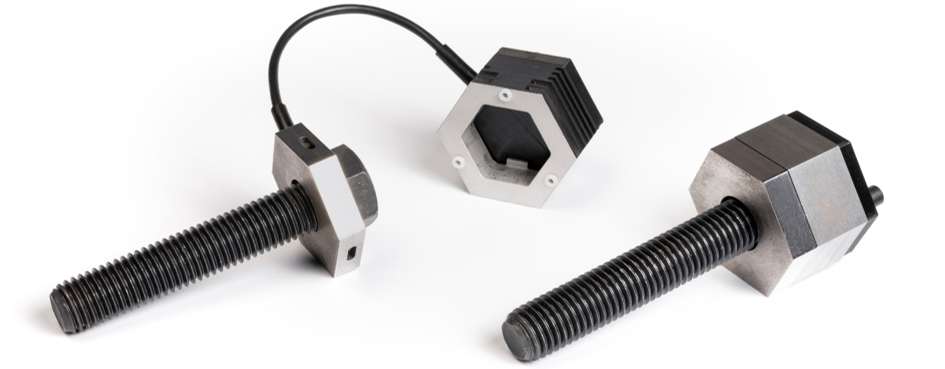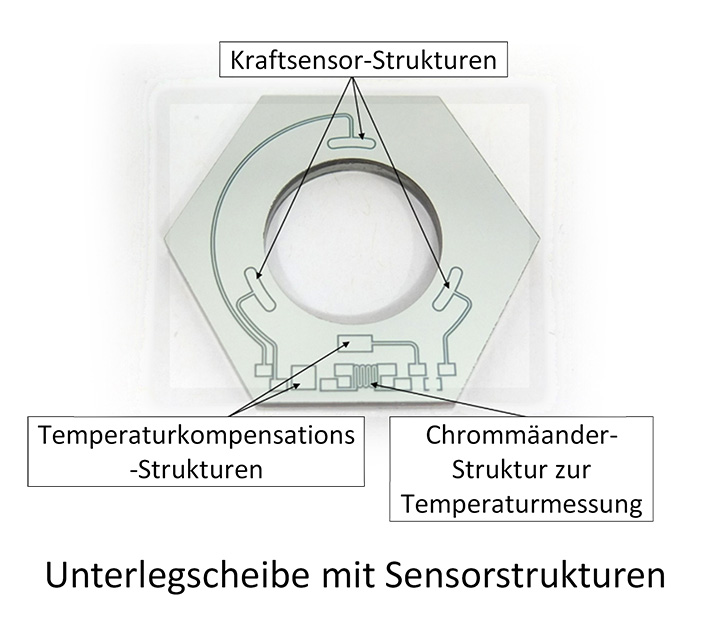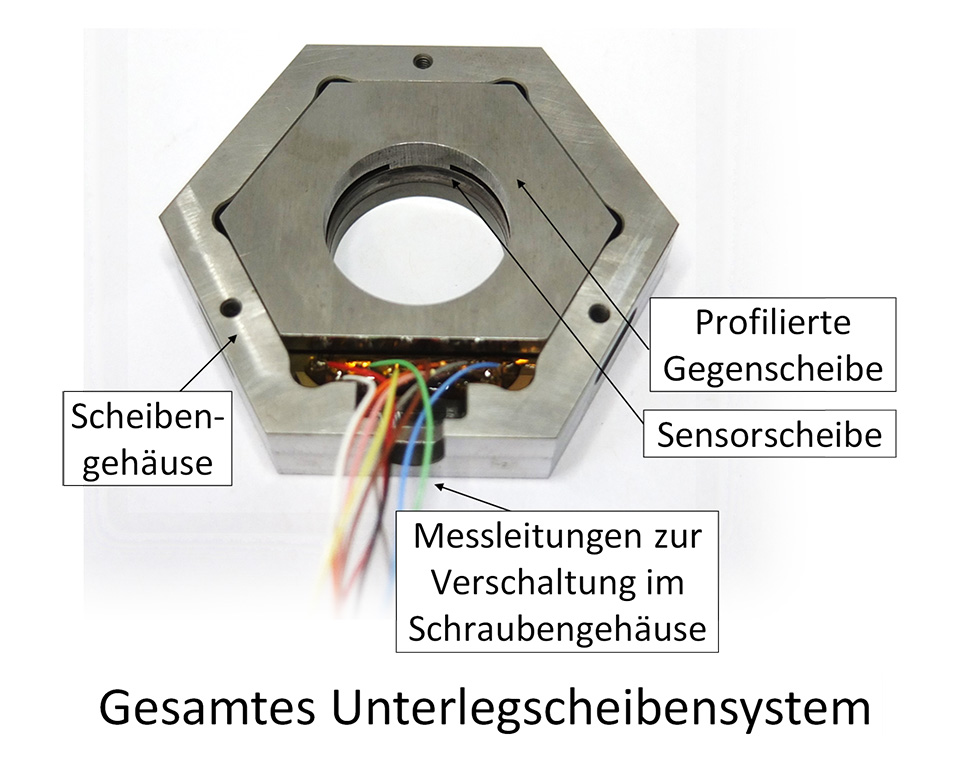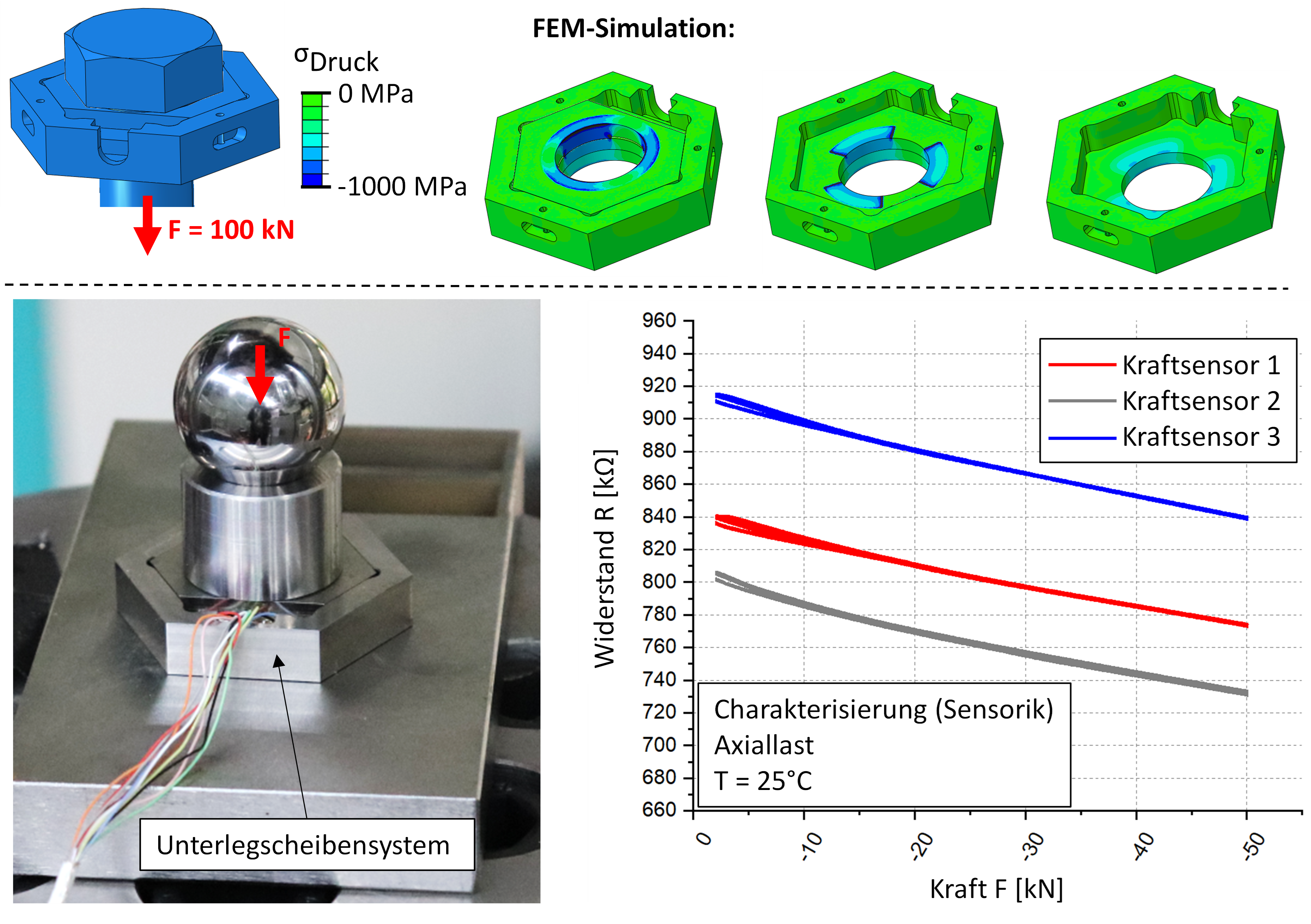Optimization and reliable design of a smart screw connection subjected to operational stresses


Standardized screw connections are used in almost all technical areas of general mechanical and civil engineering and allow the design of simple, efficient and detachable connections. Reliable fastening must be ensured, especially in the case of connections that are critical to function and safety. For this reason, connections of this kind are inspected at routine maintenance intervals by sight or using a torque wrench. These inspections result in high maintenance costs during operation, especially in applications such as offshore wind turbines. Added to this, there is no information on the actual preload force applied.
The smart screw connection developed at Fraunhofer CCIT can monitor existing preload forces using integrated force and temperature sensors. Changes in the preload force can be transmitted wirelessly and securely in encrypted form over longer distances at adaptive time intervals or on-demand. With an integrated thermogenerator, the smart screw connection is self-powered provided there is a sufficient temperature difference between the screw thread and the ambient temperature. Alternatively, it can be operated using batteries or solar power. Another notable feature is that commercially available DIN screws can be used with the smart screw connection, which means that the system does not have to be qualified or certified for each individual application.


Fraunhofer IST developed a multifunctional thin-film sensor system based on the piezoresistive DiaForce® layer, which is integrated in the smart screw connection. This includes force sensor structures located at 120 degrees, temperature-compensating structures and a chrome meander structure to measure temperature. When force is applied to the film, electrical resistance changes are measured, which are then used to determine the force with the aid of resistance-force characteristic curves.
The various energy management systems and the assembly concept for the self-powered version of the smart screw connection were developed at Fraunhofer IIS. The communication technology used is an LPWAN radio protocol based on MIOTY® technology. This allows sensor data to be transmitted with a high degree of reliability, minimal energy consumption and ranges which are higher by up to a factor of ten compared to standard radio systems.
Fraunhofer LBF developed the basic mechanical concept of the smart screw connection, which allows the use of commercially available DIN screws and the maximum screw tightening torque possible for such a screw connection without any restrictions. Using FEM simulations, the local stress distributions in the area of the sensors were analyzed and subsequently optimized to meet the construction requirements of the sensors. Then experts at Fraunhofer LBF experimentally validated the reliability in terms of tightening behavior as well as fatigue strength to guarantee the assembly and operational use of the smart screw connection. The sensor system was also analyzed, and resistance-force characteristic curves were determined. Finally, experimental investigations were carried out to validate the smart screw connection, taking all system components into account.
The innovative smart screw connection concept is an important building block in the ongoing digitalization of safety-relevant systems and, compared to conventional screw connections, offers maximum security against connection failure while at the same time significantly reducing inspection costs.

Continuous self-powered and wireless remote monitoring makes it possible to detect changes in the load on complex, bolted and safety-relevant structures at an early stage, evaluate the changes and in this way significantly increase the reliability of the structures (digital networking of systems). The use of commercially available DIN screws means that this system can also be retrofitted to screw connections that are already installed. This system can be used in a wide range of technical applications, such as offshore structures, wind turbines, plant construction and mechanical engineering, bridges and building facades.
